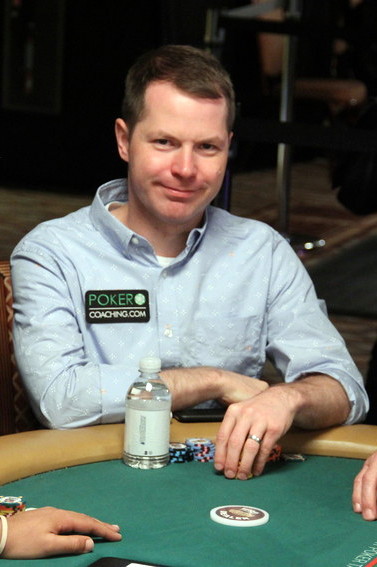






Failing To Extract Value On The Turnby Jonathan Little | Published: Feb 08, 2023 |
|
|
 If you want to increase your poker skills and learn to crush the games, check out Jonathan Little’s elite training site at PokerCoaching.com/CardPlayer.
If you want to increase your poker skills and learn to crush the games, check out Jonathan Little’s elite training site at PokerCoaching.com/CardPlayer.
I was recently told about a hand by a serious recreational poker player that illustrates a few key errors many players make on a regular basis.
In a $2-$5 no-limit hold’em cash game, our Hero raised to $30 out of his $200 effective stack with A J
J .
.
While I am fine with raising A J
J , Hero should use a smaller raise size. When he makes it $30 out of his relatively small $200 stack, unless the opponents are extreme calling stations, he will get called by mostly hands that are better than his, as well as hands that have a strong likelihood of improving to the best hand on the flop.
, Hero should use a smaller raise size. When he makes it $30 out of his relatively small $200 stack, unless the opponents are extreme calling stations, he will get called by mostly hands that are better than his, as well as hands that have a strong likelihood of improving to the best hand on the flop.
If he raises smaller, he can get called by many inferior hands that he dominates. Realize that just because many players in small and medium stakes games raise large does not mean that you have to.
The small blind, who is known to be a calling station, called. The flop came A 4
4 3
3 . The opponent checked and Hero bet $50 out of his $170 stack into the $65 pot.
. The opponent checked and Hero bet $50 out of his $170 stack into the $65 pot.
I despise this bet size because again, unless the opponent is a calling station, he will fold most of his marginal hands, which are the exact hands Hero wants to keep in the pot. Instead, Hero should bet roughly $20, which will result in the opponent calling with many more junky hands that are drawing almost dead against Hero’s top pair. Realize that even though the opponent is a calling station, he is not going to call a $50 bet with junk like K-J.
The opponent called. The turn was the J and both players checked.
and both players checked.
This is an interesting spot because the pot has ballooned up to $165 and Hero only has $120 remaining in his stack. Since the opponent called Hero’s large flop bet, it is reasonable to think that his range is mostly decent aces. If that is the case, Hero should go all-in in order to get value from those hands before the board gets much scarier, such as when the river is five, deuce, or a third club.
 Betting small is also an option if Hero thinks the opponent will call with a small bet with all sorts of junk, like K-4. The only time checking makes sense is if Hero thinks the opponent’s range is extremely weak because the opponent rarely folds the flop with any reasonable hand, but that is probably not the case due to the large flop bet.
Betting small is also an option if Hero thinks the opponent will call with a small bet with all sorts of junk, like K-4. The only time checking makes sense is if Hero thinks the opponent’s range is extremely weak because the opponent rarely folds the flop with any reasonable hand, but that is probably not the case due to the large flop bet.
The river was the 2 . The opponent put Hero all-in for $120.
. The opponent put Hero all-in for $120.
While the deuce is a decently bad card for Hero because he now loses to all hands containing a five, he should likely make the call against the loose, splashy opponent.
It is important to realize that Hero should have relatively few fives in his range, meaning his best hands are sets and two pairs. If Hero folds top two pair in this situation, he is folding almost every hand he can possibly have. If you are against someone who will fold almost their entire range to a river bet, all you have to do is bet with all your possible holdings, winning you the pot almost every time.
Hero called and lost to the opponent’s 5 5
5 , a rivered straight.
, a rivered straight.
While Hero was probably going to lose this hand, he would have gotten a lot more money in the pot as a substantial favorite by betting the turn. ♠
 Jonathan Little is a two-time WPT champion with more than $7 million in live tournament earnings, best-selling author of 15 educational poker books, and 2019 GPI Poker Personality of the Year. If you want to increase your poker skills and learn to crush the games, check out his training site at PokerCoaching.com/cardplayer.
Jonathan Little is a two-time WPT champion with more than $7 million in live tournament earnings, best-selling author of 15 educational poker books, and 2019 GPI Poker Personality of the Year. If you want to increase your poker skills and learn to crush the games, check out his training site at PokerCoaching.com/cardplayer.
Features
Tournaments
Strategy